
Topics
Guests
- Marc Garlascosenior military analyst and non-lethal weapons expert at Human Rights Watch. He is co-author of the Human Rights Watch report, “Off Target: The Conduct of the War and Civilian Casualties in Iraq.”
- Gary Andersonretired Marine colonel and defense consultant in Washington, D.C.
The Pentagon unveils a new heat-ray gun that is designed to make targets feel like they are about to catch fire. Its main goal: pain. Does it violate international law, and could it be used for torture? Retired Marine Col. Gary Anderson says, “Why would I want to use an $8 million weapon [when I can use] a 25-cent pen knife?” Human Rights Watch military expert Marc Garlasco says the weapon raises major concerns. They join us for a discussion. [includes rush transcript]
Transcript
AMY GOODMAN: The Pentagon has unveiled one of its newest high-tech weapons of the future this week: a heat-ray gun that’s designed to make targets feel like they’re about to catch fire. The gun is officially known as the Active Denial System, or ADS. It functions by firing an invisible high-energy beam from a large rectangular dish mounted on a Humvee vehicle.
The beams are designed to penetrate clothing, then travel less than half a millimeter into the skin. Within seconds, the beam heats the skin to around 120 degrees. The Pentagon describes the ray gun as a safe, non-lethal weapon designed for crowd control, but critics question the safety of the weapon if used on crowds containing elderly people, children or pregnant women.
The weapon isn’t expected to go into production for another three years, but the Pentagon has already launched a public relations campaign to win support for the experimental weapon. This is an excerpt from a promotional video produced by the Pentagon.
PENTAGON VIDEO: ADS uses a directed beam of millimeter-wave energy that penetrates about 1/64th of an inch into the adversary’s skin. The energy is harmless. The superficial heating effect is nearly instantaneous, and the adversary instinctively flees. ADS is an ideal choice for protecting members of the U.S. military and their equipment in a wide range of operations, particularly when the use of lethal force would be counterproductive. ADS utilizes groundbreaking technology that is designed to save lives, protect the innocent and limit collateral damage, while effectively repelling adversaries. ADS will minimize fatalities by providing our forces a non-lethal option between shouting and shooting.
AMY GOODMAN: Marc Garlasco of Human Rights Watch joins us in the studio, senior military analyst at the organization, expert on non-lethal weapons. Gary Anderson joins us on the phone, retired Marine colonel, defense consultant in Washington, D.C. We welcome you both to Democracy Now! Marc Garlasco, can you describe further this weapon and what your concerns are?
MARC GARLASCO: Well, one of the problems that we have is that I can’t do a very good job of describing it to you. I have gone and met with a number of military personnel and gone down to actually have conferences on the ADS, looked at video for footage on tests of the ADS, and spoken to a variety of military personnel on it, and yet they continue to hold back information from us. And one of the problems that we have is this veil of secrecy that they refuse to lift. We’re not looking for any classified information on it, just for information basically to understand the legal and medical tests that have been undertaken on it. And so, I really can’t describe in full this weapon, because of this veil of secrecy. And it’s incumbent upon the military to really lift that veil now so that we can have that discussion and debate on this really novel technology.
AMY GOODMAN: What do you feel when you’re hit with it? I mean, reporters have been hit with it.
MARC GARLASCO: Well, we’ve been told — I haven’t been shot with it yet. I’m sure that they’re looking forward to getting me under the gun soon. I haven’t been shot with it yet, but from the video that I have seen and from speaking to people who have been hit with it, it’s an instantaneous heating, very quick, rapid, and you just want to get out of the way.
AMY GOODMAN: So it causes pain.
MARC GARLASCO: It causes pain, absolutely. And one of the questions that we have for the military is, under international law, a weapon cannot legally be used, which is designed solely to cause pain. And so, we would like to see how their legal definitions have been put forward on this weapon and what their legal response is to it.
AMY GOODMAN: Colonel Gary Anderson, is this a laser? And what about this point of the weapon to cause pain?
COL. GARY ANDERSON: OK. Could I ask a question to your other guest first: if he has contacted the Pentagon since they have unveiled the weapon? They were under some strictures not to, until they officially did. Currently, they have, since you have a promotional video. Could I get an answer from that?
AMY GOODMAN: Marc Galasco.
MARC GARLASCO: Sure. Well, they just unveiled the weapon this week, which doesn’t give a lot of time for that. But I have been speaking to them for the last two years on the weapon. Sir, first I want to let you know that —
COL. GARY ANDERSON: [inaudible] my question. I just wanted to make sure that we weren’t miscategorizing the Pentagon’s position now that they’ve updated. I would suggest that you do contact them.
AMY GOODMAN: Well, Gary Anderson, is this a laser? And what about this issue of a weapon just designed to cause pain?
COL. GARY ANDERSON: Yeah, I think the promotion video probably described it. It’s millimeter-wave. It excites the upper level of the skin to a very small part, but it does inflict a sensation of pain that would cause you not to go any further if you were advancing toward an area. I have been hit by the thing about 56, 60 times, and you get a sensation of pain. You don’t want to go any further. It’s an involuntary reaction. And then, when you stop going, they turn it off, and you’re OK.
AMY GOODMAN: And when you say you get a sensation of pain, you mean across your body it’s this shock of heat, of burning?
COL. GARY ANDERSON: It is a sense that you’re very, very hot. It’s like having an oven opened right in your face, and just like going close to a hot stove, you don’t want to go any further.
AMY GOODMAN: What’s the danger of a weapon like this being used during an interrogation session, being used for torture?
COL. GARY ANDERSON: Any — you know, any weapon can be misused if you — you know, if put in the wrong hands. The question I would ask is this. You know, each variation of this weapon costs about $8 million. Why in the world would I want to use an $8 million weapon to do something I could do with a 25-cent pen knife?
AMY GOODMAN: Marc Garlasco?
MARC GARLASCO: Well, first, I’d like to say that Human Rights Watch supports the development of non-lethal weapons. We certainly think it’s a good thing to not want to kill civilians, and the U.S. military currently uses a variety of non-lethal weapons. People have to understand that this is something that is currently in their toolbox, things such as foams or pepper spray, and even things like beanbag guns. And so, these are things that they have right now.
This weapon is a leap forward by generations. You know, really Star Trek has taken over at this point. This is a novel weapon. It’s new technology. And so, at Human Rights Watch, we believe that it’s time for an open debate. There needs to be discussion on it. And we would have hoped that over the last two years, as we have been working with the military to learn more about this weapon, that that would have happened. It seems now that they’re trying to say, you know, the weapon has been authorized, we’re going to develop it, and now you’ve got a couple of years to learn about what we’re going to do with it.
COL. GARY ANDERSON: Well, let’s take those sort of point by point. First of all, all of the weapons that Marc described, with the exception of the foam, have the potential of leaving permanent damage. They’re not designed to do that, but they can, and they have. It is against the Geneva Convention to deliberately inflict permanent harm on a person that you expect to survive. That’s exactly why the ADS was developed. It doesn’t do that, and it outranges any of the weapons that we have now. Right now, the slingshots and the small arms weapons that are concealed in crowds of pregnant women and children, as they were in 1993 in Somalia and in 2003 in Fallujah, can outrange any of these weapons that he just described. The ADS has a line-of-sight-type thing to give you a standoff, so you don’t put either your people or the opposition in undue danger.
Now, let me also say that I do reemphasize the fact that now that the Pentagon has been able to unveil the weapon, I would encourage you to get together with them and open your dialogue. They’re ready to have it now. And then, if you still feel they’re not being forthcoming, then you probably have, perhaps, a legitimate problem with it.
AMY GOODMAN: What about the long-term effects of this weapon?
COL. GARY ANDERSON: As far as I know, there are none. Let’s see, the last time I was exposed to it was September of 2005, and as far as I’m concerned, I’m still alive, breathing, and feel pretty good, and just passed my last physical.
AMY GOODMAN: Marc Garlasco?
MARC GARLASCO: Well, I don’t really think that 2005 is long-term. I appreciate what you’re saying. There are certainly things that we need to learn about this. I went out to the labs and met with some of their folks. They were very reticent to share information. They were happy to have you, but, you know, they’re not as open with the documentation as we would hope they would be.
We have to understand non-lethal weapons, as you’ve stated, certainly can kill at times. This weapon is not designed to do that, but there are other things that non-lethal weapons do, as well. One of our concerns is that they lower the threshold of use. Let’s say, for example, I’m a 19-year-old soldier holding an M-16, and I have a crowd in front of me. You know, perhaps if I see women and children, I’m going to be less likely to pull the trigger on them, because I know that I have the capability to kill them. But if I have a weapon in hand, which I know is not going to give permanent damage, or at least believe that, perhaps I’m more likely to use it. And so, we’re concerned that it’s not just the medical effects or the lasting effects on people, but there are a variety of things non-lethal weapons do just by their nature that will complicate the battlefield.
COL. GARY ANDERSON: Marc, I understand your concern, but I suffer from the advantage of having experienced that type of position and that type of decision making close up in Somalia, and I will tell you this: I desperately wanted to have that capability as an alternative between doing nothing and having to fire into the crowd. Even if I was very, very precise with my snipers, there was always a chance of killing an innocent. I wanted that ability to sort of set my phaser on stun, and I think any thinking soldier would want that, and I think the American public is going to understand that. So I welcome having this argument. Now that the Pentagon has allowed the scientists to talk about it, I really welcome this policy debate. I think the American public has an innate ability to understand common sense, and I think they’ll side with my side, rather than your side.
MARC GARLASCO: Yeah, I don’t see it as an argument, nor do I see a need to have an argument. We’re just looking for an honest and open discussion about it. In fact, when I first met with the military on the ADS two years ago, I said to them, “Look, you know, here is an opportunity to embrace your critics and to have us as a supporter. Explain the weapon system to us better, because we really think it’s a good idea not to kill civilians, and potentially you’ve developed something here that has some very positive aspects to it, but we have legitimate concerns.” Now, they’ve taken two years and dragged their feet. As you state, they have now unveiled the weapon. I think it’s incumbent upon them, though, to allow that debate, to have that debate, before a weapon is given the thumbs up and put into production.
COL. GARY ANDERSON: I think they’ve opened up that debate, Marc. I think what you need to do is engage with them, and let’s go ahead and have that debate.
AMY GOODMAN: Do you think, Marc Garlasco, that this new heat-ray gun has signaled a new direction in non-lethal technology?
MARC GARLASCO: Well, absolutely. You know, we’ve gone now — there’s been a huge leap in non-lethals, from the very short-range non-lethal weapon that leaves marks and now all of a sudden we have things that are novel technologies, things that are not going to be stopped under certain international laws, or I should say that are not going to be governed by certain international laws on weapons. And so, we’re going to look at the broader Geneva Conventions covering them. You know, for example, there is no treaty body that is going to govern them specifically, so we have to look at international law more broadly. And so, since they’re a completely new level of technology, we really have to take a look at them very carefully. And, as you stated, it’s not understood, the long-term damage effects. 2005 is not a good bellwether. We don’t really understand the ocular damage that it can do to someone. And as also stated before, pregnant women, children, the infirm, these are all people that are going to be far more susceptible to lasting damage, and there needs to be more understanding on the part of the public as to what the effects of this weapon are.
AMY GOODMAN: Colonel Anderson?
COL. GARY ANDERSON: OK, I think, Marc, I agree with you there. But the one thing I want to point out is that we’re dealing with adversaries who are deliberately putting women and children into those situations to mask gunmen, and so forth. It’s called asymmetric warfare, and they do it very well. Not having the ability to deal with that in a non-lethal manner is, in my mind, criminally irresponsible.
AMY GOODMAN: I mean, stun guns, for example, were talked about as non-lethal technology, and, of course, we see case after case in being used in domestic situations, police on people here in the United States, where people have died.
MARC GARLASCO: That’s correct. And they continue to be used. We’re talking now about not an individual; this is a crowd-control weapon. We’re talking about a large number of people. I was out at Penn State University last year, which is one of the labs that works on Active Denial System, and I learned that one of the problems that they’ve been working with is the bounce effect of the weapon, where if you’re firing the weapon and it hits off of an acute angle, that, in fact, it could be directed in ways that —- you know, a scatter ability that they may not intend. And so, there are a lot of potential -—
AMY GOODMAN: And what does that mean?
MARC GARLASCO: That means that the weapon can hit one spot, and it can ricochet off and go much farther than it’s intended. And so, we’re just concerned about the development of policies, procedures, and the way the weapon is employed. The training of the soldiers — this is something completely new that these kids are not going to be initially understanding. They have to learn how to use it.
And also looking at the possibility of the weapon cutoff, you know, as I understand it, currently when the weapon is first employed, there is a safety mechanism in which it shuts off very rapidly so that the people are not, you know, on fire for a long time, or at least have that sensation for a long time. The concern is override. What about the possibility of a lengthening of this period so that the people are actually exposed to it for a longer period — can an adversary fight through it? And so, there are a lot of things going on here. It’s far more complicated. And while I appreciate what the colonel says, that we want to minimize civilian casualties — and we at Human Rights Watch believe that, as well — it’s far more complicated than just saying you either have the opportunity to be shot with a bullet or to be uncomfortable.
AMY GOODMAN: We’re going to leave it there. I want to thank you both for being with us. Marc Garlasco of Human Rights Watch, and I also want to thank retired Marine Colonel Gary Anderson, joining us from Washington, D.C., defense consultant.


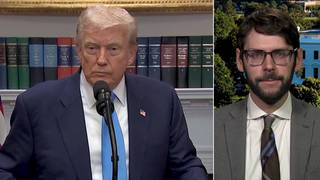
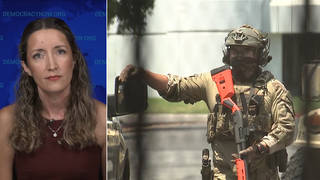
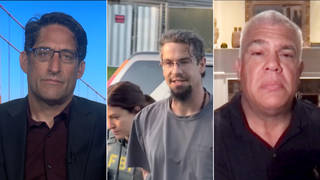
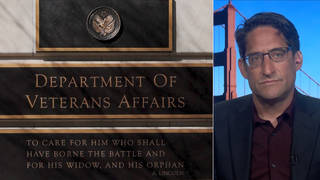
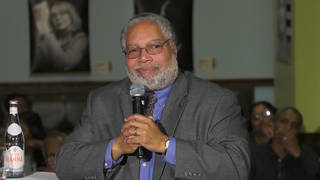




Media Options